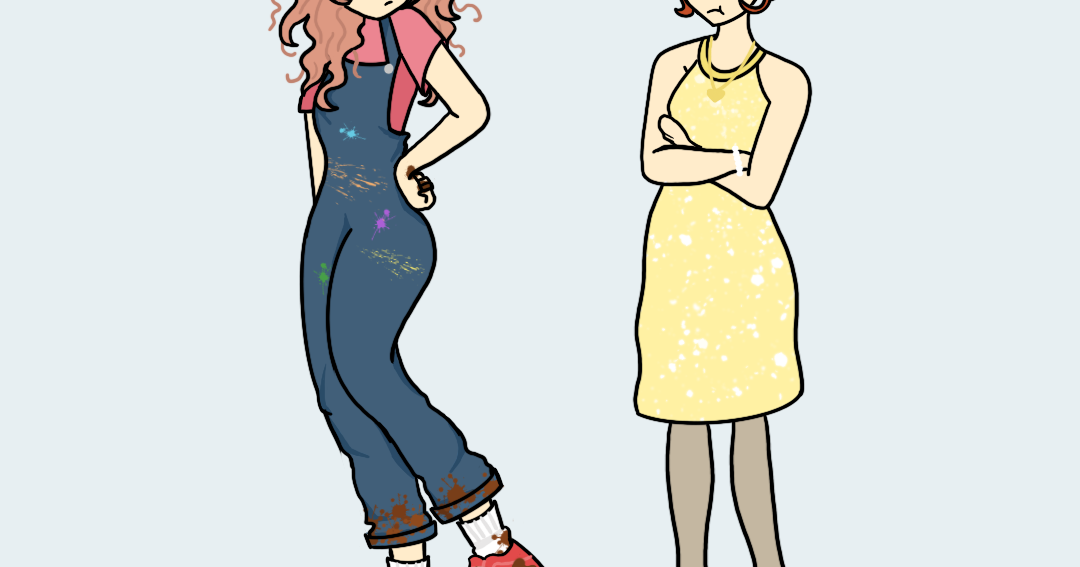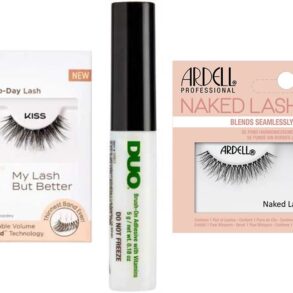
The “dirty girl aesthetic” or “messy girl aesthetic” has become a trendy look in the media, opposing the common “clean girl aesthetic” and embracing disheveled looks with messy hair and smudged eyeliner. It is similar to the ‘90s grunge look or a musty style resulting from a hangover.
On the contrary, the clean girl aesthetic is modeled after someone whose style is considered put together. Usually, the “clean look” manifests in slick back buns, dainty hoop earrings, neutral colored clothing and minimal makeup.
The dirty girl look is a trend on TikTok for people who oppose skin care routines and minimalist fashion. Rather, the dirty girl aesthetic is for those who don’t want to put much effort in and often look messy and cluttered, wearing sweatpants and forgetting to brush their hair or take off last night’s makeup. This aesthetic is a double standard, though because while this aesthetic may be acceptable for white people, it is especially conflicting for people of color.
Race and cleanliness have a history that dates back to the mid-19th century. During this time, hygiene determined social status. If one was deemed unhygienic, they were considered unkempt, poor and financially unstable. This notion promoted forms of segregation, stereotypes and a judgemental environment.
The discriminatory history of race and hygiene illustrates how the dirty girl trend keeps caucasian people at the forefront of a white-dominated beauty industry. The media should celebrate beauty in all forms, instead of creating a space for only one demographic to thrive.
As a young Hispanic, brown woman, I could be judged for oily hair and going days between showers. Growing up, it was vital I leave the house looking clean and neat in all aspects of my appearance. It was unacceptable to wear torn, loose clothes to school or on any special occasion.
My siblings and I were taught to be representations of our parents. So, if our appearance seemed “dirty,” our parents were represented as “dirty people” of low social standing. Therefore, when I go a day or two without washing my hair, I’m afraid people will notice and jump to conclusions about my cleanliness.
Although it is not the 19th century, the problem of race and cleanliness continues. In the 21st century, the media has created toxic beauty standards that are impossible reach. Whether it’s a neat ballet bun or clumpy mascara, white women have dominantly represented the media’s trendy aesthetics.
One influencer who embraces the dirty girl aesthetic is Emma Chamberlain. In her early days of Youtube, Chamberlain was admired for her lack of a hygiene routine. She would express to her audience she went days without showering and washing her hair. While this may be relatable for some, Chamberlain is an example of a white person who is allowed to partake in that aesthetic while still being praised and accepted for it.
The beauty of white women has influenced the mainstream media for a long time. This may be one of the reasons why the media continues to prioritize it. Although the problem may not be the beauty standard itself, the conflict is what group represents the standard and ultimately sets people of color up for failure in the beauty sphere.
If popular trends and beauty standards continue to shine the spotlight on only one race, the media, participants and viewers will remain narrow minded in its standards of beauty, making it difficult for people of color to freely express themselves through surface-level aesthetics if they desire to.
Personally, I feel defeated hardly seeing inclusivity surrounding the epitome of society’s beauty standard.
Despite popularity around the clean aesthetic, the dirty aesthetic feels to be an alternative. While it may be relatable for some, the hungover look is not for me. On an occasion of stepping out with greasy hair or skin, I fear that people will jump to conclusions and see me as someone who is sloppy and unclean.
Even when I dress casually, I feel underdressed, sweaty and messy.
Whether it be my self-image or how I feel I am perceived, I constantly feel I have to overcompensate for other people’s perceptions of me and my culture based on what I am wearing.
While it’s commonly rude to appear untidy, the in-trend unkempt look is commended for some. In other words, the white demographic is praised for purposely appearing disheveled while it’s frowned upon for people of color.
It is problematic to highlight a white woman as the front and center of an aesthetic that is already exclusive to the white demographic. Instead, the media should embrace aesthetic beauty in all cultures without jumping to conclusions about personal cleanliness.
Personally, it’s difficult to feel confident in what I’m wearing as a result of the double standard. My fashion inspiration unintentionally becomes filled with a white demographic due to the media and the face of popular trends. Baggy clothes are deemed cute and cozy on a slim white woman but frumpy and disoriented on me. The smudged eyeliner is the new style but it looks sloppy to others when I wear it.
The mainstream media should redefine the standard of beauty in current times. It would eliminate a phony double standard and destigmatize the dirty girl aesthetic for people of color.
This post was originally published on this site be sure to check out more of their content.








